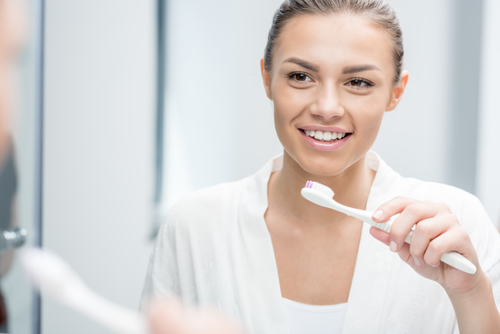
What better time than the start of a new year to check in with your smile. If you don’t love the products you’re using to clean your teeth, it’s time to find something new. There are countless options available at your local drugstore (not to mention online), and there’s guaranteed to be a toothbrush and toothpaste that are a perfect fit.
Should I Be Using an Electric Toothbrush?
Manual vs. electric can feel like a big decision – but it all comes down to what’s right for you.
No matter what, you should brush your teeth twice a day, with a fluoride toothpaste, for two minutes – once in the morning and once at night. Manual toothbrushes are as effective as the electric ones as long as you brush properly.
Benefits Of An Electric Toothbrush
If you’ve never used an electric toothbrush, you probably have some questions about whether it’s something you should try out. With many different brands and types to choose from, it’s worth exploring your options to find the right fit for you.
Overall, the main pros of electric toothbrushes include:
Easy to use.
Patients with arthritis or other mobility issues find using an electric toothbrush is much easier to use than a traditional toothbrush. The self-moving bristles help to remove plaque more thoroughly which can be very helpful to someone who isn’t able to manually brush thoroughly on their own.
Improved Brushing Habits.
Generally speaking, the features of most electric toothbrushes can enable you to improve on brushing habits with built-in technology features like:
- Timers to help you keep track of how long you’re brushing for to ensure a full 2 minutes
- Different brushing modes for patients with sensitive teeth
- Whitening benefits
- Pressure sensors that alert you when you’re brushing too hard
- Digital reminders to replace your brush head
- Rotating bristles that remove more plaque and reduce gingivitis more effectively
Effectiveness.
While a manual toothbrush can be as effective as an electric toothbrush if used properly, an electric toothbrush removes the guesswork and room for error when brushing. If you don’t typically brush every surface of your teeth for long enough, a powered brush will do a better job at removing plaque that causes cavities and periodontal disease.
Finding the Right Toothpaste
Don’t get overwhelmed by the glut of options. If you’re interested in personalized advice, just check in with Dr. Barton or your hygienist at your next exam. We’ve put together a quick guide to different types of toothpaste below to help guide your search.
Sensitive Teeth.
When your teeth are sensitive, your enamel isn’t able to protect inner layers of your teeth. Choose a sensitive specific toothpaste with a desensitizing agent and make sure you’re brushing gently, as overly forceful brushing can cause receding gums and worn enamel.
Cavity-Prone Teeth.
If you tend to learn about cavities at your dental exams, you’re probably frustrated and ready for some positive news at your next check-up. Try using a toothpaste with fluoride that helps to fight cavities and don’t rinse your mouth or drink water after brushing so the fluoride has more time to work on your enamel.
Yellow Teeth.
If your teeth are yellow and stained, or you’re trying to keep them white after a recent whitening treatment, using a toothpaste with whitening ingredients will help to break up stains and polish teeth. Whitening toothpastes are only effective on newer stains, and won’t have an impact on deeper discoloration where a whitening treatment will reach.
Braces and Orthodontics.
Getting the hang of cleaning around brackets and wires can be tricky and takes some time to adjust. Using a fluoride toothpaste will help to keep enamel decalcification (white spots on teeth after braces are removed) at bay, and will help to protect teeth from cavities.
Improving My Dental Health At Home
No single toothpaste, or type of toothbrush is going to save you from ever having another cavity. Achieving effective oral hygiene at home is possible by following a few simple guidelines:
- Always use a toothpaste with the ADA seal on its packaging so you know your toothpaste is both safe and effective.
- Try a few different options of brushes and toothpastes to find the perfect fit for you and your teeth.
- Brush for a full two minutes, twice a day.
- Brush every surface of your teeth, and don’t forget to brush your tongue.
- Don’t forget to include flossing in your daily hygiene habits.
If you need help in finding the right toothbrush or toothpaste for your mouth, ask our team about a personalized recommendation at your next checkup.





